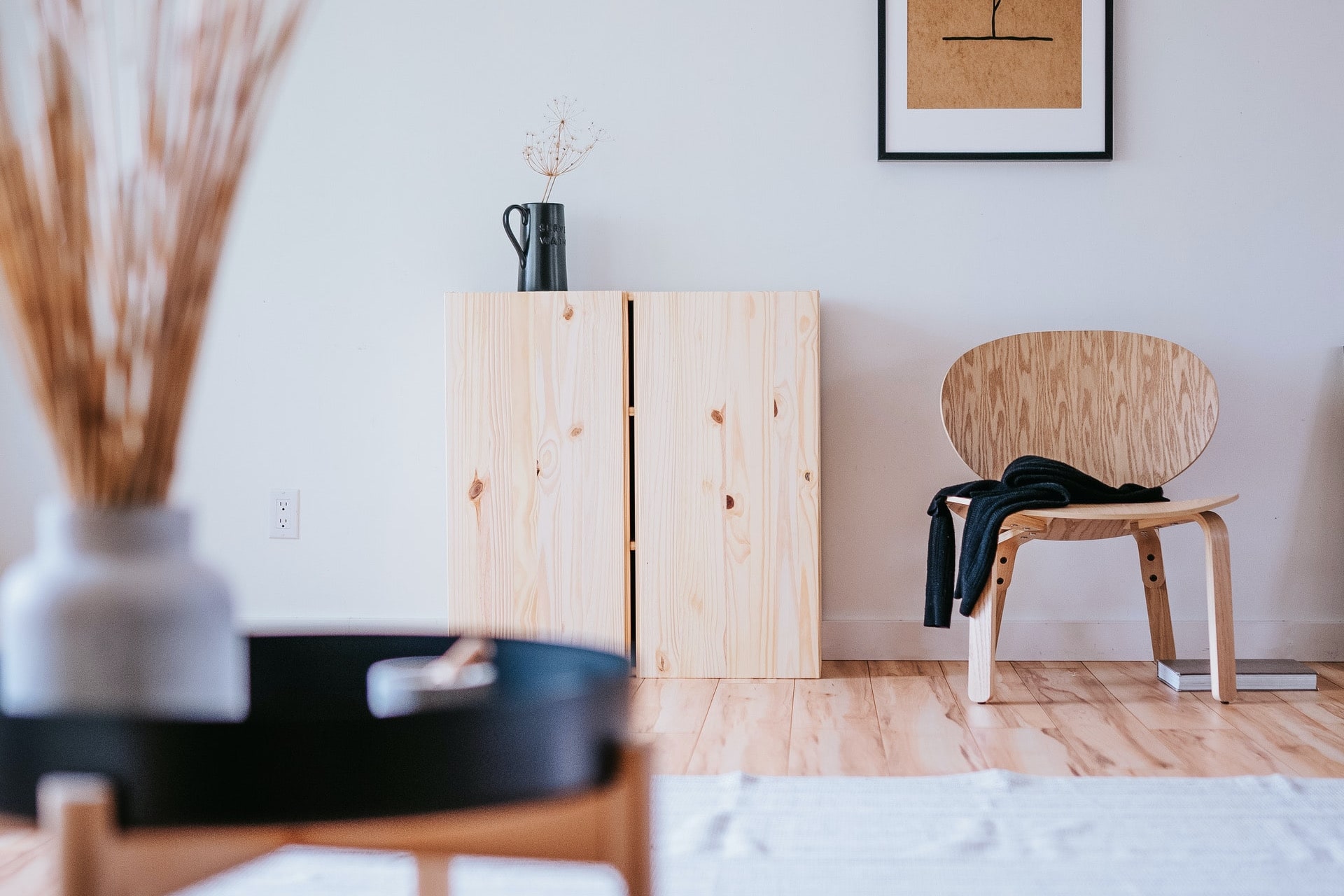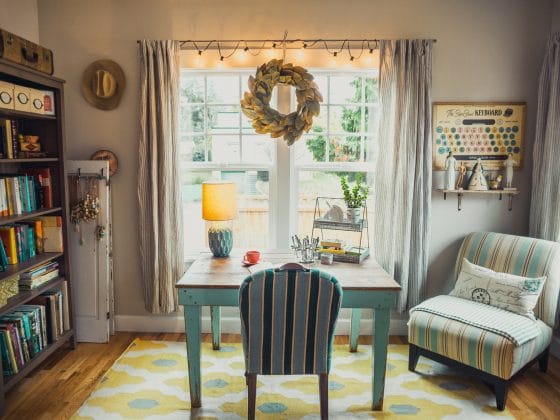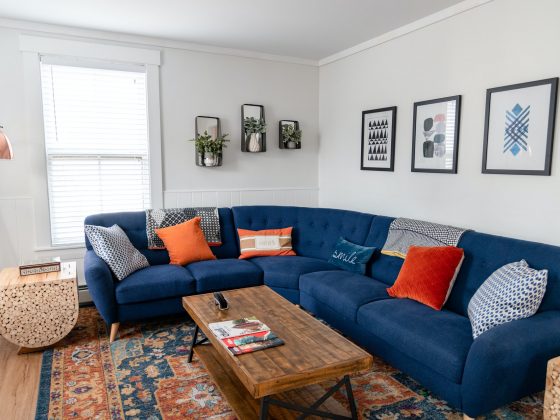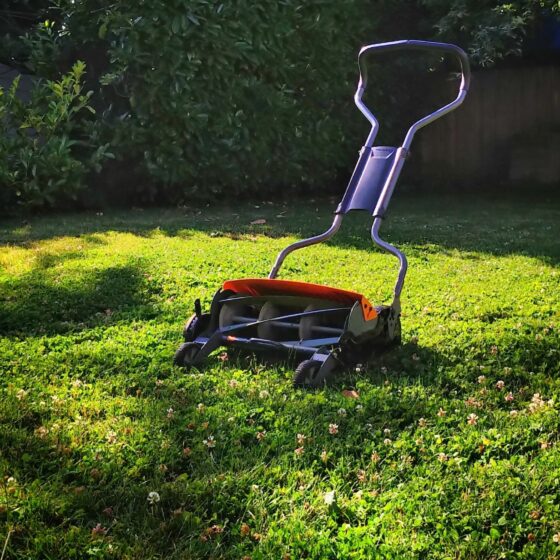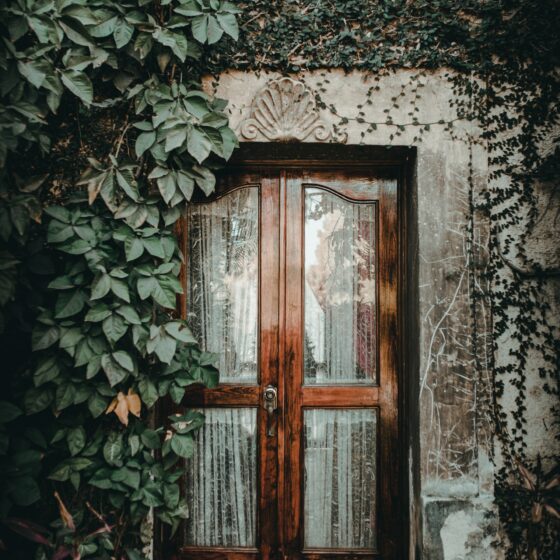The new interior design style, Japandi, is one of the fastest-growing trends of 2021, and it’s easy to see why. This combination of Japanese and Scandinavian design is minimalist, favors clean lines, functionality, and interesting combinations of materials that create a sense of calm that appeals to many homeowners.
But how does one incorporate the Japandi style with ease? This guide will provide you with all the answers you need to completely transform your home’s look and make it a heaven of elegance and sophistication.
Use Natural Materials
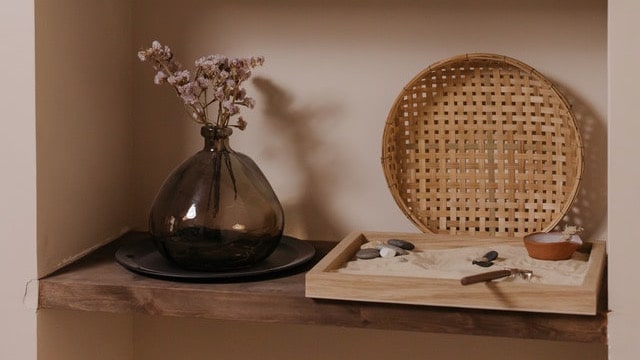
One of the defining Japandi style characteristics is the use of sustainable, high-quality natural materials, especially wood. In essence, this style blends Scandinavian modernity with Japanese traditionalism, which creates an interesting “imperfect-perfect” effect.
As mentioned, one of Japandi’s staples is wood, which can be used for everything from floors and furniture to tableware. In this context, if you are striving to achieve the ideal Japandi interior design, we strongly recommend prioritizing eco-friendly and sustainable materials.
Besides wood, consider the following natural materials.
For textiles:
- Velvet
- Organic brushed cotton
- Organic linen
- Organic cotton muslin
For furniture:
- Cane
- Bamboo
- Wicker
- Rattan
For decor:
- Plants
- Glass
- Terra-cotta
- Clay
- Concrete
- Paper
Mix Various Textures
For a breathtaking Japandi–style living room, we suggest using a blend of textures. For instance, you can mix multiple kinds of wood or wood and glass to add visual interest. Slate, bamboo, and paper lampshades are also welcome in a Japandi–style house.
Use Natural Colors
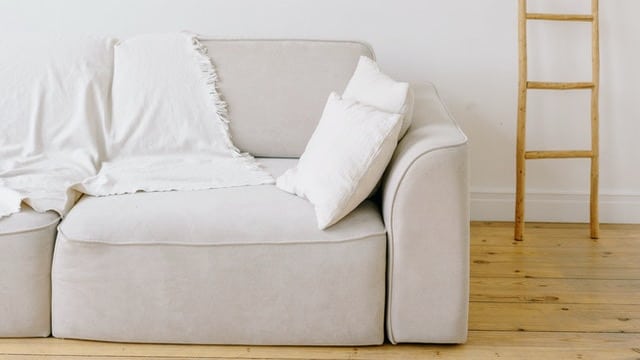
Choose your colors carefully. The Japandi color palette is dominated by neutral, natural colors such as creme, white, olive, beige, and muted brick red.
Although this style also incorporates the darker and warmer colors of the Japanese aesthetic (grey, navy blue, and green), it complements them with more neutral and cooler tones we associate with Scandinavian design. Nevertheless, the prevailing Japandi design colors are soft pastels that evoke images of nature.
Choose a Warm White Base for the Walls
As mentioned before, to achieve the best Japandi effect, you’ll want to pick a warm, neutral color palette. For the walls, we recommend going with a warm white base. This way, the room will look clean, and the furniture’s design and intricate texture will come to the fore.
In interior design, less is often more: Note how every Japandi–style kitchen you come across on the Internet invariably features a warm white or a muted grey, pastel base. We love this warm white look because it adds a dose of elegance and simplicity to every living area decorated in the style of Japandi.
Pick Simple Furniture
It’s essential to remember that “simple” does not equal “easy.” One of the most distinctive Japanese elements present in Japandi is the appreciation of outstanding craftsmanship. So make sure to steer clear of generic pieces of any sort. When shopping for Japandi–style furniture, always look for high-quality pieces with a sleek design and soft edges, and you’ll be sure to achieve the desired effect. For instance, a typical Japandi–style sofa will be light grey, low, and will look exceptionally minimalistic.
Declutter Your Space
Unlike some other styles – Baroque, Oriental, English, Bohemian, to name a few – Japandi isn’t a style supportive of cramped spaces cluttered with a profusion of objects. You should clear your home as much as possible and reduce clutter by using natural containers such as bamboo, wicker, and woven baskets. This will produce an airy atmosphere that appeals to all senses. Keep in mind that these natural materials are a vital component of Japanese home styles.
Play with Patterns
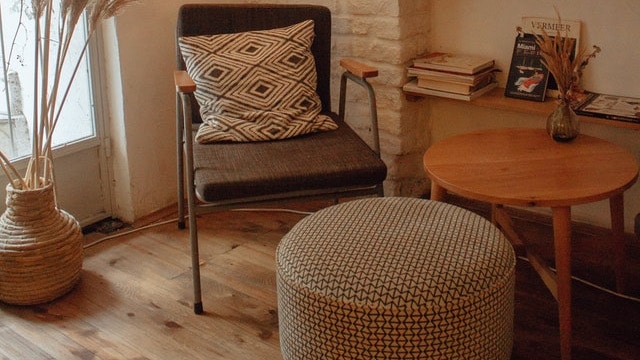
In Japandi, patterns can work well only if you use them carefully and sparingly. For example, Japanese design principles allow you to incorporate artwork and textiles or use intricate wallpapers.
Truth be told, the easiest way to spice up your home in the Japandi way is by finding eye-catching yet simplistic wallpaper designs. But be careful not to overdo it.
Here are some of the trendiest patterns that you could add to your Japandi–style living area:
- Asanoha (hemp leaves)
- Shippō (seven treasures)
- Kanoko (fawn)
- Mameshibori (bean squeeze)
- Yabane / Yagasuri (arrow feathers)
- Seigaiha (blue ocean waves)
Pay Attention to Flooring
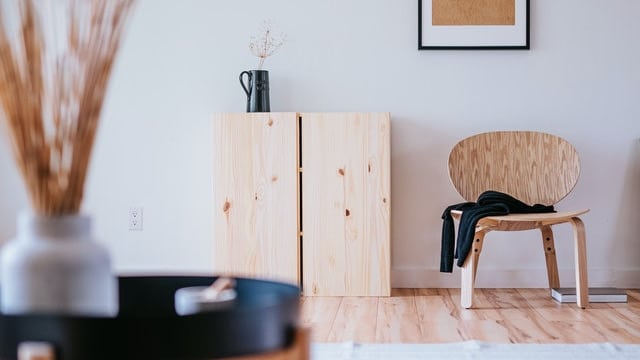
Japandi floors are usually made of hardwood. You can select whether a dark or light tone is more appropriate for your home. If you have darker hardwood floors and long for a dazzling Japandi–style living room, we recommend complementing the floor with a natural beige-toned rug or carpet for an interesting contrast. Also, you’ll need a high-quality hardwood floor cleaner to keep the floor spotless.
Create Contrast

In fact, the advice we’ve given above isn’t limited to floors. Japandi decor is largely based on contrasts. For example, you can paint the walls a creme or warm white color and add contrasting furniture such as rich dark-colored cabinets.
Experiment with the colors of the furniture. For example, you can create the perfect contrast by putting a dark-toned home office desk in a living room with beige or white walls for an irresistible look.
Try Adding Texture to the Walls
The walls in traditional Japanese homes are usually covered in cedar or bamboo panels, so it’s not surprising that Japandi–style walls often have distinctive textures. So, if you want to add visual appeal to an empty space, try textured walls. Choose organic materials you can find in nature – wood, cane, rattan, or wicker, to name a few.
Conclusion
Japandi is, above all, a philosophy. This blend of Japanese and Scandinavian design principles is all about simplicity, natural look, and utmost minimalism. Both Scandinavian and Japanese people appreciate skillfully made and durable objects, and this is something we can see reflected in the Japandi style. We hope these tips and tricks will inspire you to get productive and remodel your home to perfectly fit your needs and taste.
FAQ
What is the Japandi style?
Japandi or Scandinese is a trending design mix of Japanese and Scandinavian designs. In essence, this trend incorporates elements from both styles to produce the ideal combination of function and form. Ultimately, the goal of Japandi is to combine Hygge and Wabi-Sabi, the Scandinavian and Japanese concepts of living.
As a reminder, Hygge (pronounced as “hoo-ga”) translates to a sense of coziness and well-being derived from enjoying the little pleasures in life, whereas Wabi-Sabi is a worldview based on acceptance of imperfection and transience. Some of the most typical characteristics of Wabi-Sabi include roughness, asymmetry, and simplicity.
What does Japandi mean?
Derived from the words “Japanese” and “Scandi,” Japandi is a cross between the Japanese and Scandinavian design aesthetics. It mixes Japanese minimalism and Scandinavian functionality to evoke a sense of simplicity and calm.
This trendy nature-inspired fusion focuses on light colors, bright and uncluttered spaces, and clean lines to achieve the ideal combination of form and functionality.
How can I get the Japandi style?
To sum up, you can create the Japandi home of your dreams by:
- Using organic, natural materials such as wood, cedar, wicker, bamboo
- Mixing and matching various textures
- Using natural colors like beige and creme
- Choosing a warm white base for the walls
- Choosing simple furniture
- Decluttering your space
- Playing with patterns
- Paying attention to flooring
- Creating contrast to add visual appeal
Besides this, keep things simple and minimalistic. Remember, less is more.
What influenced Japandi?
As mentioned, this style is a fusion of the Japanese Wabi-Sabi and Scandinavian Hygge concepts. Although they are geographically far away, both cultures highly value natural materials and craftsmanship. Hence, the Japandi style revolves around natural elements, neutral, earthy colors, minimalism, and simplicity.

